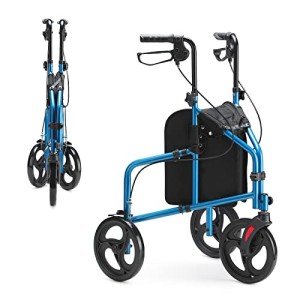Rollators are mobility aids developed to assist individuals with walking difficulties while promoting self-reliance and safety. Unlike traditional walkers, rollators come geared up with wheels for simple and easy navigation, making them an important tool for lots of elderly and disabled individuals. Among the crucial functions that improve the functionality of rollators is storage. This article checks out rollators with incorporated storage choices, highlighting their benefits, types, and crucial considerations when choosing the best design.
A rollator is a wheeled walker that provides assistance for individuals who might have a hard time with balance or endurance. Typically, rollators are created with the following functions:

The addition of storage options in rollators brings a number of benefits:
A number of types of rollators come geared up with storage services:
| Rollator Type | Description | Appropriate for |
|---|---|---|
| Requirement Rollator | Usually includes 4 wheels and a sturdy frame. Storage options, like a built-in bag or basket, are often consisted of. | General use, outdoors |
| Compact Rollator | A smaller sized variation that folds easily for transport. While these designs typically have actually limited storage, numerous still include very little performance. | Travelers and tight areas |
| Heavy-Duty Rollator | Designed for bigger people, these rollators often have better storage capability. | Bigger users, stability needs |
| Rollator with Seat | Functions a built-in seat for resting. Storage options differ, often including baskets or shopping bags. | Those needing regular breaks |
| Walker-Carrier Combo | Acts as both a rollator and a lightweight cart, perfect for shopping journeys. | Grocery shopping, outdoor use |
When choosing a rollator with storage, several aspects need to be thought about to ensure that it fulfills specific needs.
To guarantee longevity and ideal efficiency, routine maintenance is vital. Users ought to think about the following practices:
Selecting the best size includes examining your height and weight, in addition to monitoring deal with height modifications to guarantee that it is appropriate for your stature.
Yes, some rollators are designed with larger wheels and shock-absorbing systems that make them better for irregular surface. It's essential to check the requirements.
Many modern rollators are developed to be easily foldable. Try to find instructions in the user manual that accompany your chosen design.
Most basic rollators support between 250 to 350 pounds; nevertheless, heavy-duty designs can support higher weights.
Yes, lots of rollators featured the alternative of adding accessories like cup holders, trays, and bags to improve functionality.
In summary, a rollator with storage is a valuable mobility aid that empowers individuals while supplying them with the benefit of carrying necessary products. By comprehending the various types, essential features, and upkeep requirements, users can confidently select the ideal rollator that fits their way of life, promoting self-reliance and convenience in daily activities. As mobility aids continue to progress, they become progressively vital for improving the lifestyle for elderly and disabled people.
No Data Found!
